7+ SAMPLE Trainer Lesson Plan
-
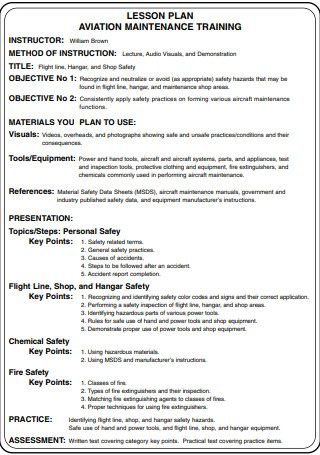
Trainer Lesson Plan
download now -
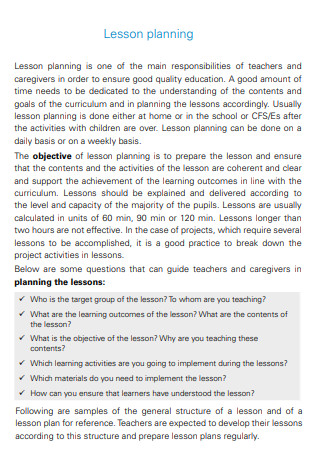
Trainer Education Lesson Plan
download now -
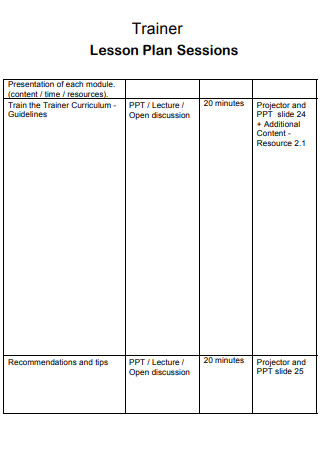
Trainer Sessions Lesson Plan
download now -
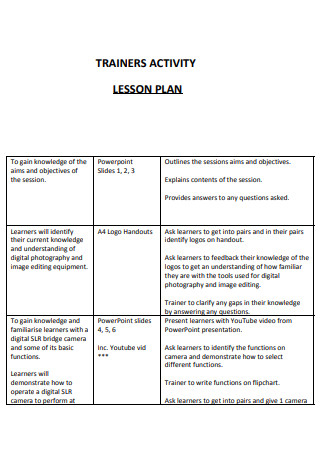
Photography Trainer Lesson Plan
download now -
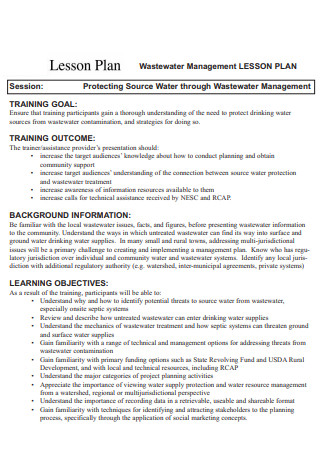
Trainer Lesson Plan in PDF
download now -
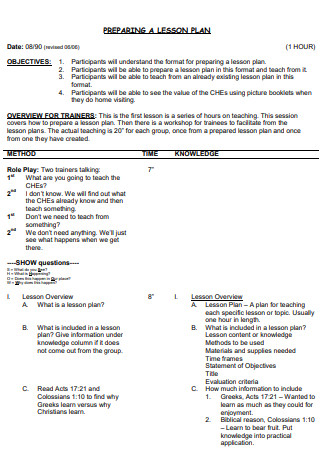
Trainer Lesson Plan Example
download now -
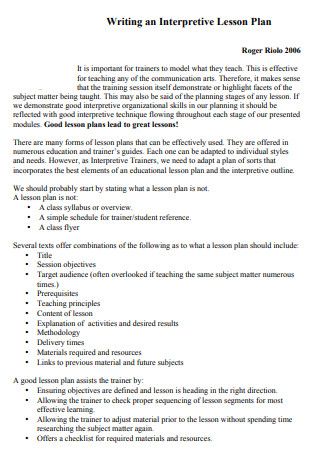
Interpretive Trainer Lesson Plan
download now -
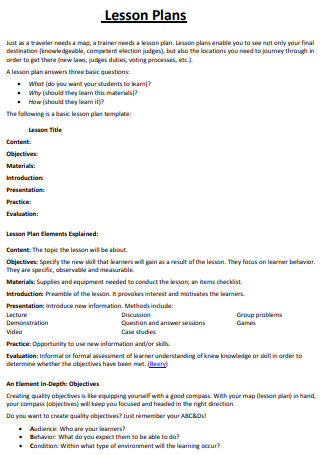
Professional Trainer Lesson Plan
download now
FREE Trainer Lesson Plan s to Download
7+ SAMPLE Trainer Lesson Plan
a Lesson Plan?
Benefits of Utilizing a Lesson Plan
Elements of a Lesson Plan
How To Create a Trainer Lesson Plan
FAQs
What is a student’s role?
What is the trainer’s role?
Why should trainers be included in the development of the learning strategy?
What Is a Lesson Plan?
A lesson plan is a detailed statement by a teacher of the instructional sequence or “learning trajectory” for a particular lesson. A teacher makes a daily lesson plan to facilitate class learning. Details will vary according to the teacher’s preference, the covered subject, and the students’ needs. According to statistics, the United States has over 375,000 personal trainers. In the future years, the individual training market is predicted to increase faster than usual. Your agility and creativity will help you differentiate yourself from other personal trainers.
Benefits of Utilizing a Lesson Plan
Consider it a necessary vitamin for the educator’s survival. The scarcity may result in insufficient growth as a teacher. A solid lesson plan communicates to the teacher what is critical for pupils to learn. And, because it is prepared within the constraints of individual comfort, it is more perceptible. It will detail the content and tasks that must be completed within a specified time frame. Lesson planning gives teachers a step-by-step strategy for delving deeply into the subject they are teaching. It indicates how the lecture’s material should be conducted. Along with planning for these critical criteria for in-depth learning, a lesson plan assists teachers in complex ways to imagine. We illuminate the ten most important ways a lesson plan can serve as a teaching and learning tool for teachers and students.
Elements of a Lesson Plan
Different states and school districts have varying expectations for what teachers should include in their lesson plans. Similarly, private and charter schools may require additional components not included here. When designing lesson plans, you may choose to consult with your administration to see which elements they would like you to cover. The following are eight standard features seen in many lesson plans that you may want to incorporate while building your own:
How To Create a Trainer Lesson Plan
The trainer’s lesson plan is for the learner and the method by which the trainee will learn the course. You can quickly begin the training session on the right foot when you have the structure plan in hand. The trainee must adhere to the plan and strategy to attain academic and vocational success. The trainer prefers the plan since it enables the trainee to accomplish the objective and fulfill the requirements for academic success. If you’re still interested, the following steps will guide you through the process of making one.
-
1. Determine your objectives
To begin developing a lesson, you must first determine the class objectives. What are your goals for the duration of the period? Are there specific skills or knowledge that your pupils should possess? If you’re teaching younger pupils, a lesson objective would be for them to recognize animals that reside in the rainforest after reading a chapter about Brazilian species. For senior children, this objective may include solving algebraic equations.
2. Determine your students’ needs
Are you introducing new content or reviewing stuff you’ve already taught in a previous session with this lesson? At the start of class, inform students of their expectations to remain focused on fulfilling your objectives. When reviewing information, some of your pupils may want further encouragement. Including these requirements in your lesson plan will assist you in preparation.
3. Prepare your resources and materials in advance.
Make a list of the items and resources you’ll need to deliver this lesson, such as paper, pens, and rulers. Don’t forget to incorporate proper technology resources into your approach – laptops and gamified learning tools such as applications or educational websites.
4. Encourage your students to participate
What purpose does a lesson have if your pupils are not engaged? You want them to be involved with the material you’re teaching. Thus, to prepare, you must pique their interest in the subject of this lesson. Provide them with an outline of the information you’re going to provide. Then, more casually introduce the matter. For instance, if you’re teaching kids a formula, consider deriving it from scratch to help them develop an intuitive sense of how it works. Alternatively, if you’re covering specific historical events, connect them with contemporary events to help pupils connect with the topic.
5. Educate and inform
After you’ve established the context for your lesson, it’s time to offer the content to your pupils. This is the moment to teach and utilize any resources included in your lesson plan. Engage your pupils by involving them in the process whenever feasible. For instance, you could invite students to come to the board and solve certain issues or provide answers to specific questions. Whether reading from a book, utilizing props such as blocks for younger children, or putting graphics on the computer for older pupils, it’s all about effectively communicating information and concepts. Don’t forget to take into account your pupils’ varying learning styles so that you can use teaching strategies that work for everyone.
6. Concluding and evaluating the lesson
Conclude the class with a brief recap. Give a quick review of the lesson, highlighting the key themes covered. As a refresher, have students identify the major concepts and leave them with a preview of the next class so they know what to expect. Also, offer students an opportunity to demonstrate their content knowledge through a brief quiz or test. Depending on the findings, your next lesson plan may incorporate a review of previously covered material before moving on to a new subject.
FAQs
What is a student’s role?
Students play a critical and active part in teaching as learners. They engage and connect with students and teachers, experience classroom discussions, and demonstrate a receptive attitude. Apart from what their parents instruct them at home, students spend a considerable portion of their lives in schools.
What is the trainer’s role?
A trainer’s role is to enhance an individual’s competency and skillsets to operate effectively and efficiently in the workplace. The trainer should convey to learners straightforwardly and professionally what is expected of them throughout training.
Why should trainers be included in the development of the learning strategy?
The trainer is accountable for ensuring that their learners’ abilities are developed by assisting them in reaching their potential. Trainers contribute to client satisfaction, making it easier for businesses to recruit and retain qualified employees.
As a personal trainer, you will undoubtedly have a rewarding and significant career, as you will assist various people in improving their talents and maintaining a healthy lifestyle. Assist them in concentrating on the characteristics and abilities necessary for success. Inspire them to continue studying, improve, and achieve their own goals and dreams. Encourage children to become responsible citizens who donate positively to society. We have included various lesson plan samples to use in your training or teaching job.
